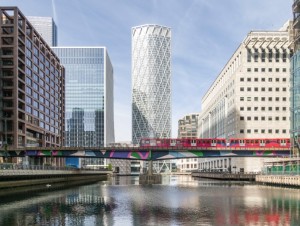We’re definitely living in the age of the skyscraper in the UK. Tall buildings over 20 storeys tall are becoming more and more commonplace, particularly in big cities like London and Manchester. They get a lot of support because they can provide housing and other spaces without as much urban sprawl. However, it is important to ensure the designs are high quality. We can learn lessons from some of the most significant older high rise buildings. Some were successful, while others were a sad failure. Let’s dive in, then you can talk to us if you want to work with an architect in London.
Kensal House
 Firstly we have one of the most iconic and beloved housing estates in England. While not a high rise by today’s standard, in the 30s it was a huge achievement. More importantly, the focus was on creating high quality working class housing. The flats themselves were high spec at the time, including fantastic kitchens. Even more, there had been thought to ensure bedrooms would be light in the mornings by facing east. In addition, there was care and attention to promote collective living with amenities like nurseries, social clubs, and allotments. The property is still beloved today, with a Grade II* listing.
Firstly we have one of the most iconic and beloved housing estates in England. While not a high rise by today’s standard, in the 30s it was a huge achievement. More importantly, the focus was on creating high quality working class housing. The flats themselves were high spec at the time, including fantastic kitchens. Even more, there had been thought to ensure bedrooms would be light in the mornings by facing east. In addition, there was care and attention to promote collective living with amenities like nurseries, social clubs, and allotments. The property is still beloved today, with a Grade II* listing.
Quarry Hill
As we said, some of the high rise projects weren’t successful. Quarry Hill in Leeds was an impressive example of experimental design. However, in practice there were countless problems with the buildings. The actual construction had many issues and delays too. Ultimately, after 40 years they were bulldozed.
The Lawn
As we got into the 50s, taller buildings were becoming more common. The Lawn has the title of the UK’s first residential tower block. It was the inspiration for thousands of other buildings all across the UK in the following decades. One of the most impressive things about the Lawn’s design is the ingenious way it ensures all living rooms have great views. Plus, the property itself has an impressively small footprint and green space around it. As a top architect in London, we can definitely see all the benefits.
Trellick Tower
The Grade II* Brutalist Trellick Tower is a beloved landmark in East London. It has an incredible history. From the beginning the aim was to give council tenants the best homes, including lovely materials like marble and clever designs. There were problems at first in the 70s, including crime and vandalism. Gradual improvement in the 80s, including a concierge, changed things. By the 90s, it was somewhere people wanted to live.
St Katharine’s
The interesting thing here isn’t so much the buildings themselves, although they are impressive. The notable thing is how they were redevelopment. In the 70s the GLC ran out of money to refurbish the housing. Instead of shelving the plans, a group of council tenants formed a co-operative, the first example of such an agreement in the UK. They then took on the job of refurbishing homes and managing everything, including gardening and finances. There was even a busy social calendar, including discos, trips, and football tournaments. The model is still inspirational today, showing what is possible with housing blocks if residents are involved.
Discuss your ideas with a top architect in London
In May 2024 we got the news that there were almost 600 high rises in the pipeline for the UK, with almost 60% proposed for London. Since then, construction is underway on some while others are awaiting planning permission. We’ve also seen lots of other proposals for various parts of the UK. Skyscrapers are definitely here to stay, changing how we look at developments and how people want to live.
If you’re thinking about a project, it’s best to have the right people onboard. Coffey Architects is a great option if you want to work with an innovative team. We’re an architect in London with limitless potential. So, get in touch today and tell us your brief. We’ll provide the perfect services, including design and planning solutions.
